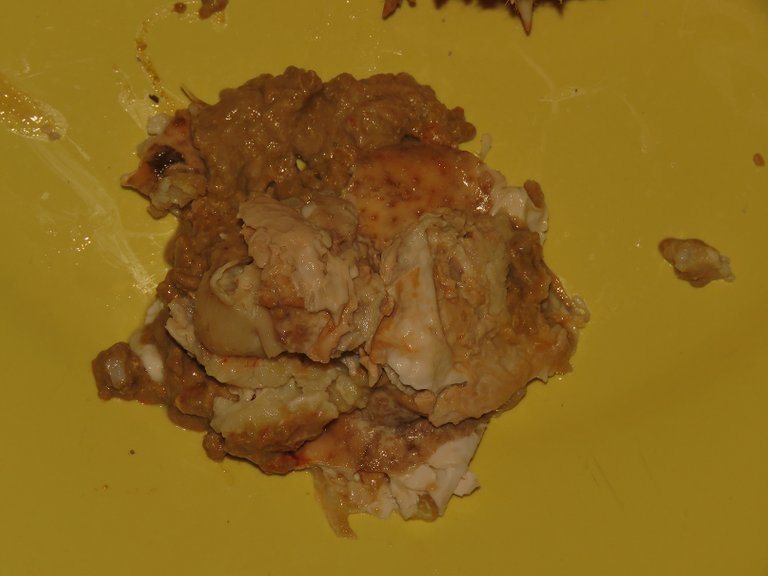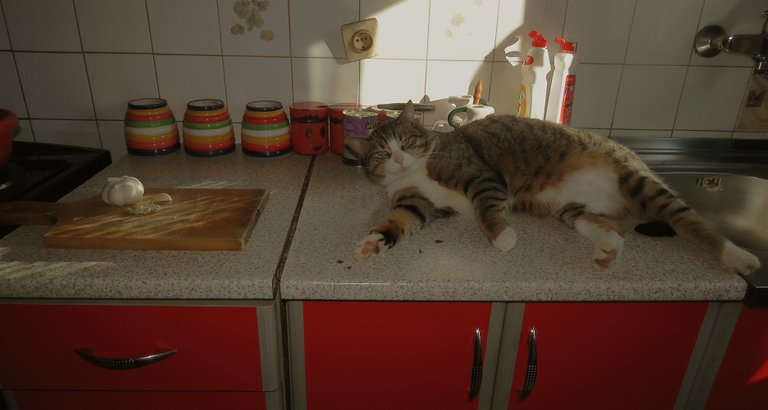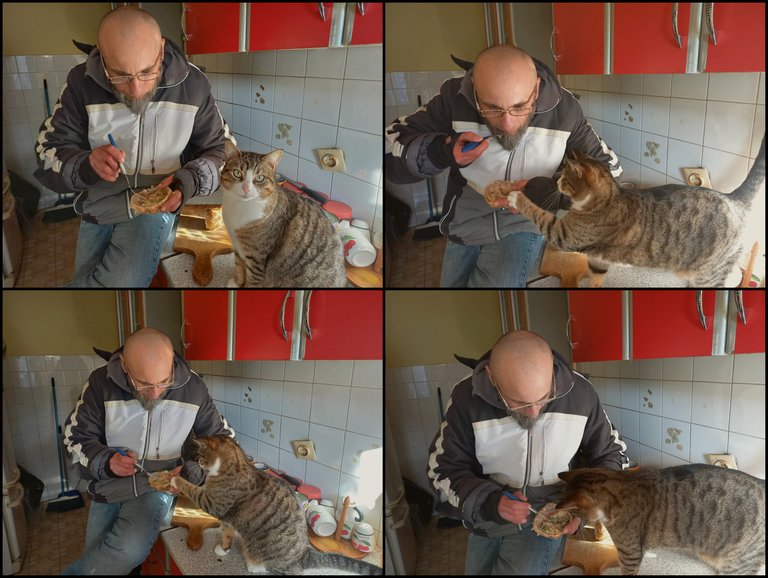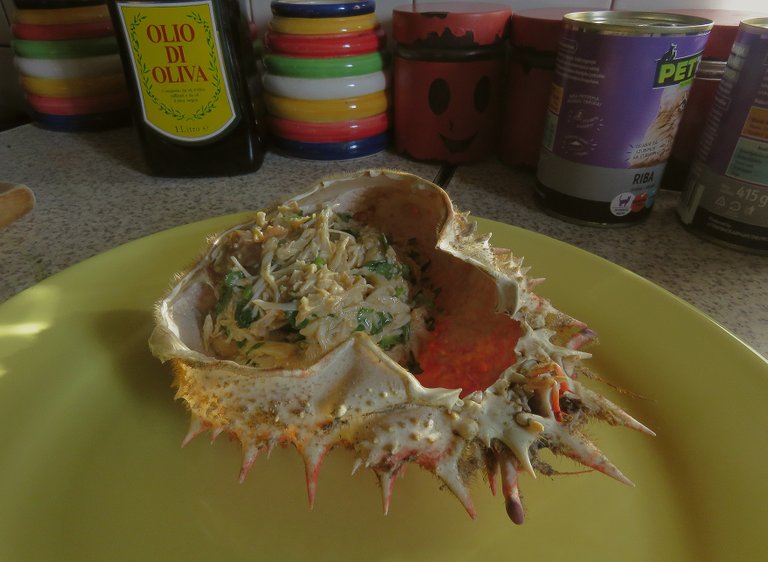In the following photograph, you can see a handful of cold crab salad served in the crab's carapace.
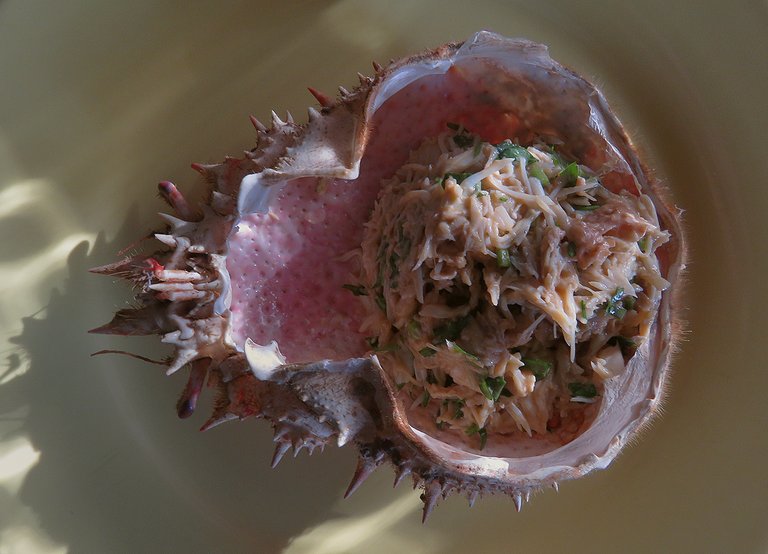
The photograph was taken an hour ago, early in the morning, when I finished preparing the thing, but ...
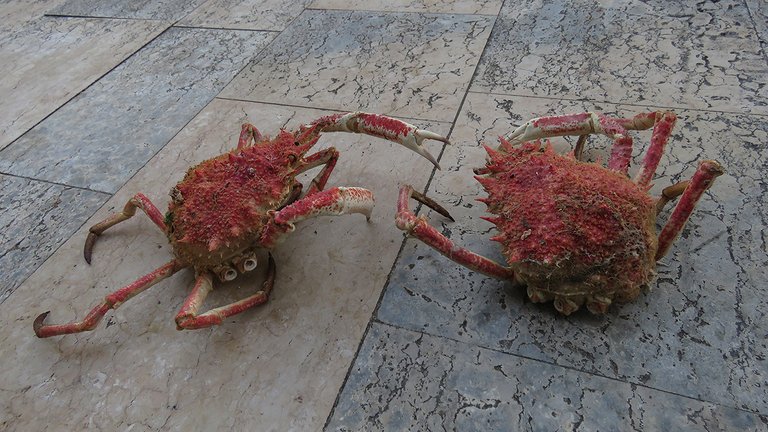
... but, to give the story a proper start, I have to go back till the evening of the previous day ...
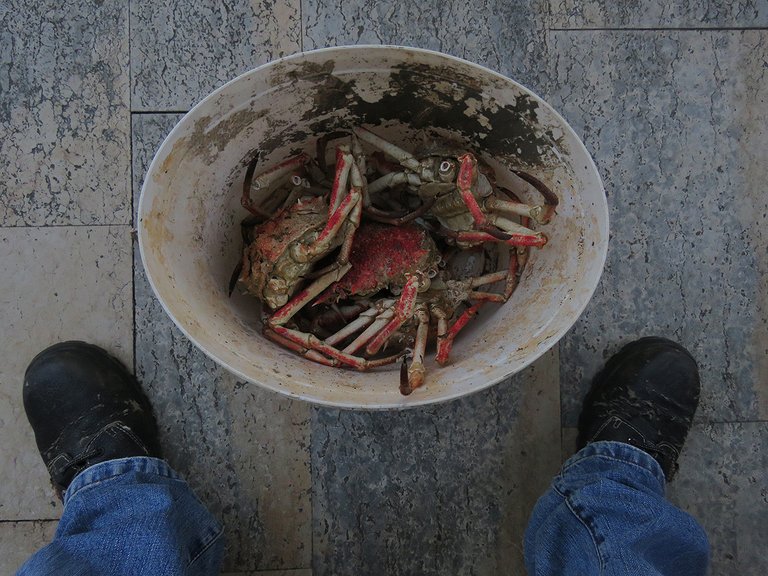
... when a friend who works on one of the local fishing boats brought me a pretty large bucket with four crabs in it. I cooked them for about 10 minutes in the biggest pot that I have, and then an hour later when they were cool again, I returned the crabs to that same plastic bucket. In this photograph, you can see the crabs after cooking. Their original color is also red, but less intense with shades of black, olive-green, and dark violet.
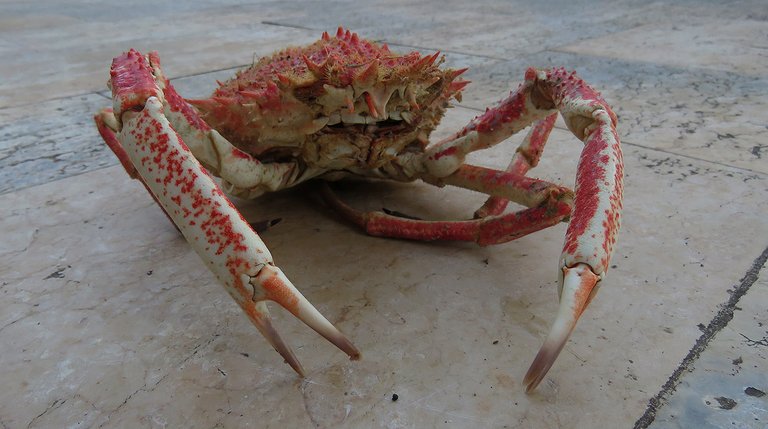
Maja squinado, commonly known as the European spider crab, lives in big numbers in the bay of my hometown, and when caught, it can become delicious seafood. It's so tasty that practically doesn't need any spice or salt to be a very good meal. But for this post, I did add a few ingredients at the end.
Like first, I decided to break the legs and pincers with a wooden hammer ...
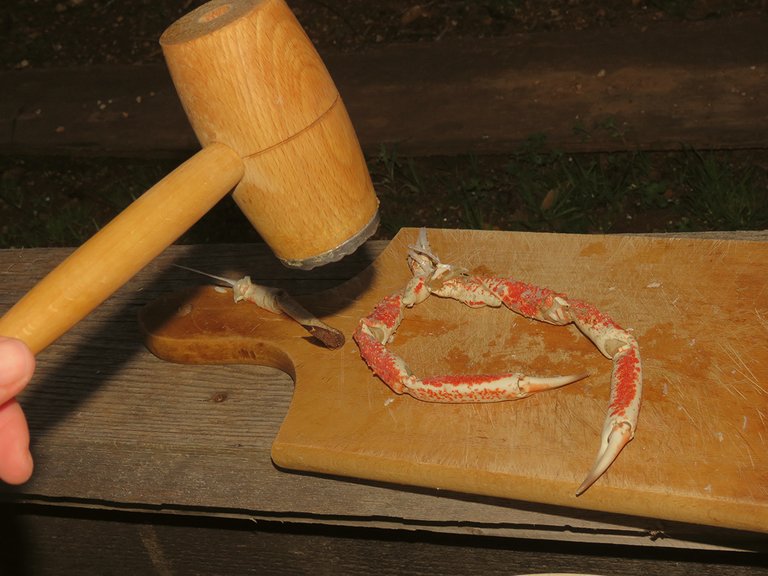
... because I like to do this part outside, in the yard, and the night was near, so there was less than an hour of daylight to do it. While hammering the hard exoskeleton, the water inside the crab's body can come out in unpredictable sprouts that can reach far across the kitchen.

A friend was there with me ...

... so she broke a few legs too.
While there, she also took this photograph, in which you can see me doing the hammering.
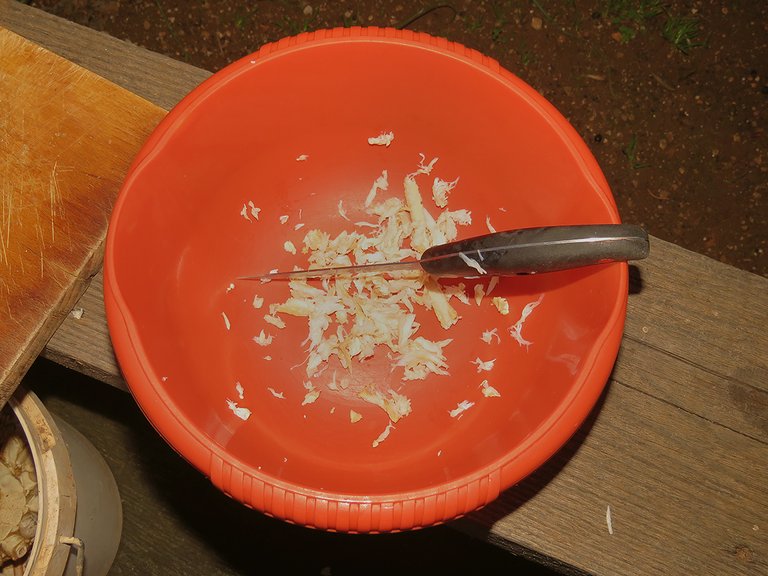
Here you can see how much crab meat I got at the end of this phase. It isn't much. You can even say that it's very little, nothing worth all that hammering. But this thing is very tasty and kind of precious. After taking this photograph ...
... I entered the house and continued dismantling the crabs. In this photograph, the carapace is open and you can see the crab's cooked interior.
Besides the exoskeleton, practically all this stuff is delicious.
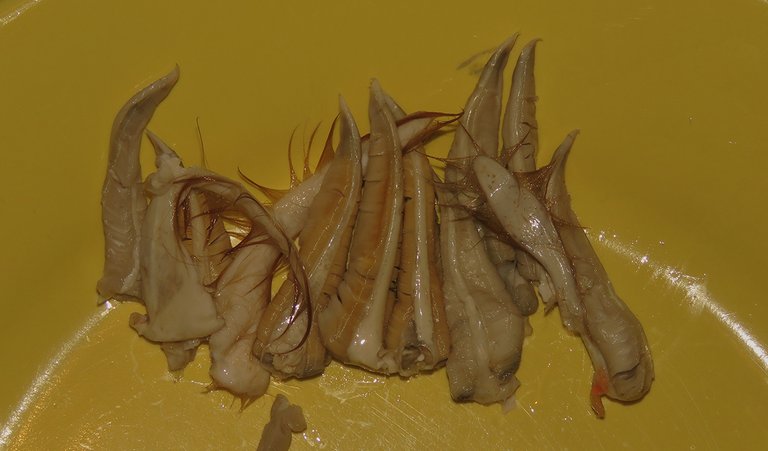
I removed only the gills, which are fibrous and hard to swallow ...

... and this thing from the bottom part of the crab.
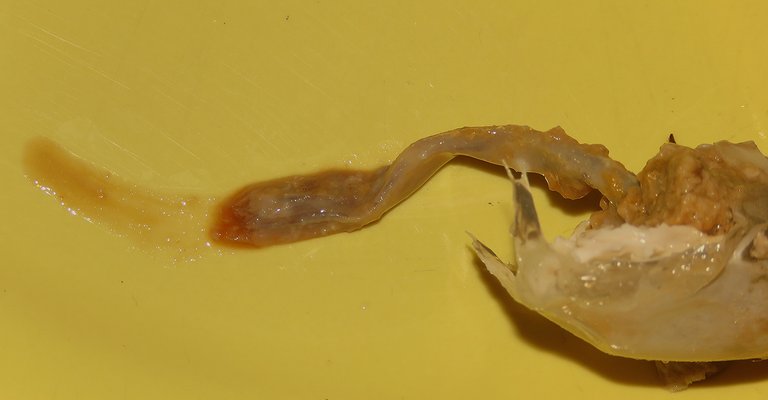
The intestine. Or just a stretch of the intestine, filled with grains of sand that can be annoying when you put them in the mouth with the juicy meat of the crab.
The stuff in these photographs looks like a great piece of body horror. Like something out of the iconic David Cronenberg's movies. It's pretty disgusting to look at. But it's an important ingredient of a good crab salad. These innards are made of the crab's heart, digestive glands, and reproductive organs.
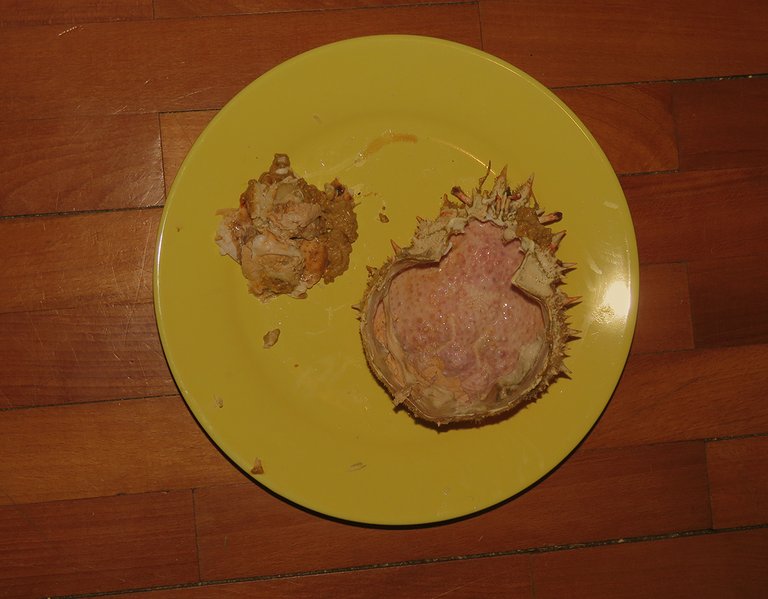
Here I piled all the chunks of that ugly interior and put them next to the cleaned carapace in which the final product will be served. I arranged the scene like that only to take the photograph that shows this phase in the preparation.
A minute later ...
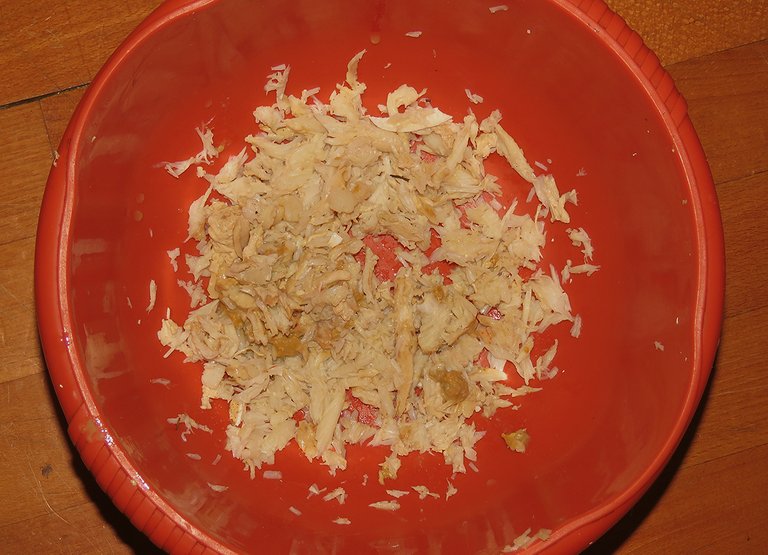
... it all ended up mixed with the white meat inside the red salad bowl.
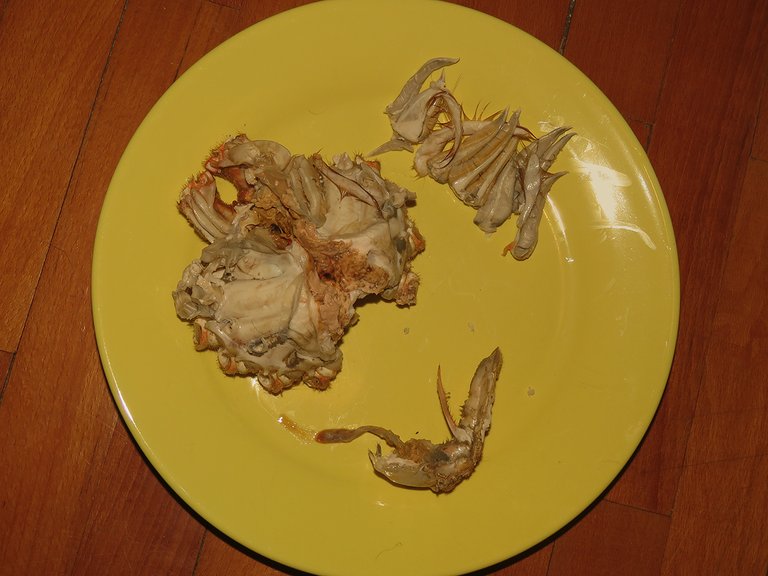
After that, I proceeded to extract the meat from the chambers of the exoskeleton. This took a small knife and plenty of patience. I put some hard & loud music on and I spent more than an hour doing this. Didn't photograph this phase because pulling out the meat took more than enough time. Washing the hands and photographing stuff in the middle of the operation would require that extra dose of patience that I just don't have.
In this photograph, you can see the edible and inedible body parts neatly arranged on the dish. It was taken a moment before I started collecting the precious meat.
Here you can see what I've got when all four crabs were processed.
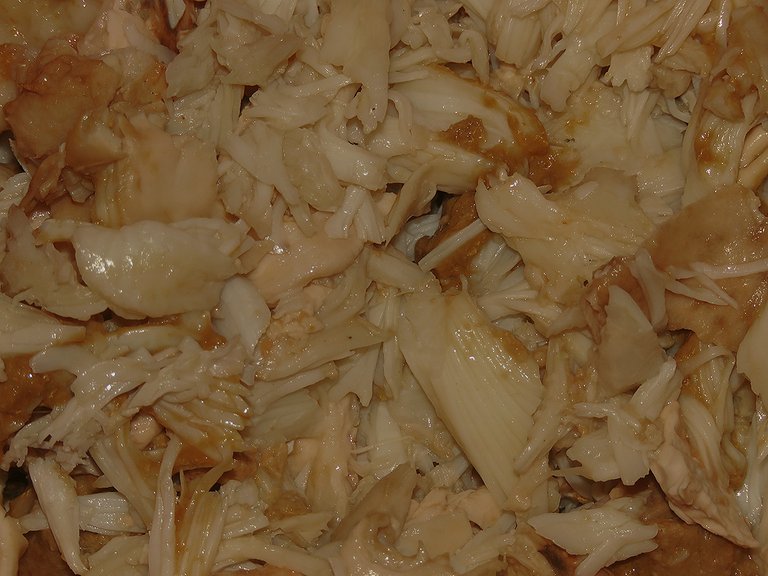
Here you can take a more up-close look at the meat and innards.
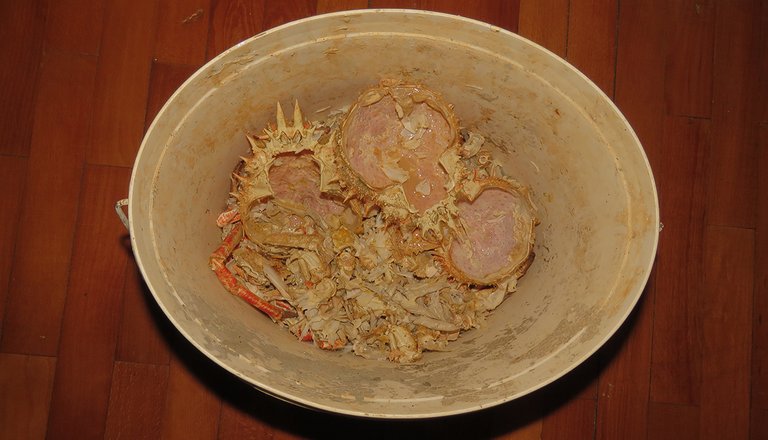
All hard exoskeleton parts besides that one carapace that was washed and put aside were now in the big white bucket, ready to be thrown back in the sea the next day, while the edibles were stored in the fridge.
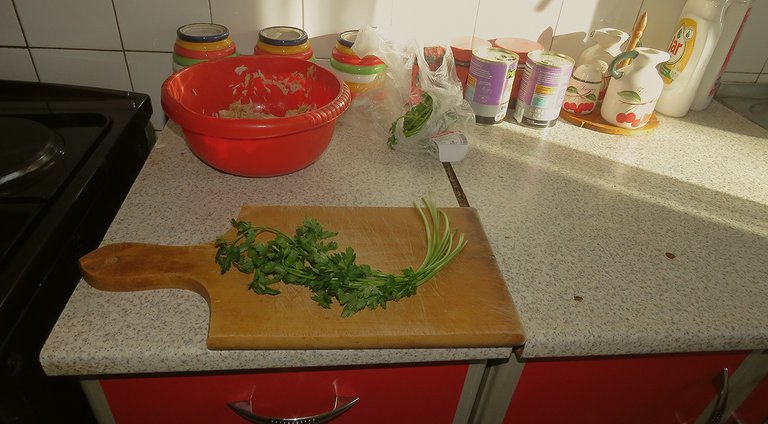
The next morning, which was earlier today, I was in the kitchen and ready to continue.
It was, and still is, a beautiful day. The sun was shining and the cat called Palchic came nosing around the kitchen ...
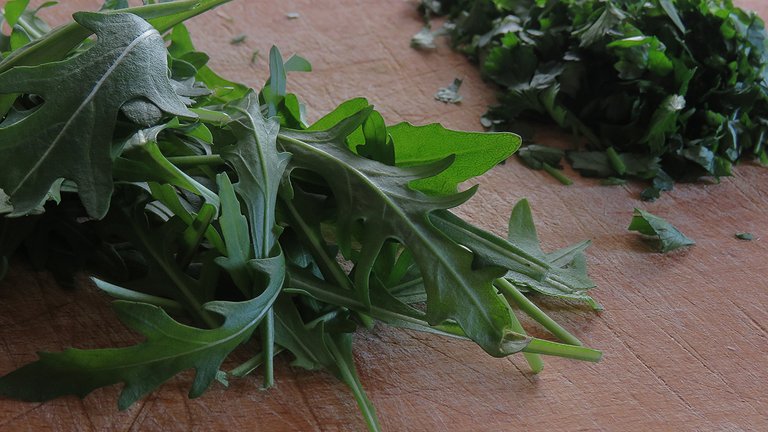
... while I was cutting the leaves of arugula ...
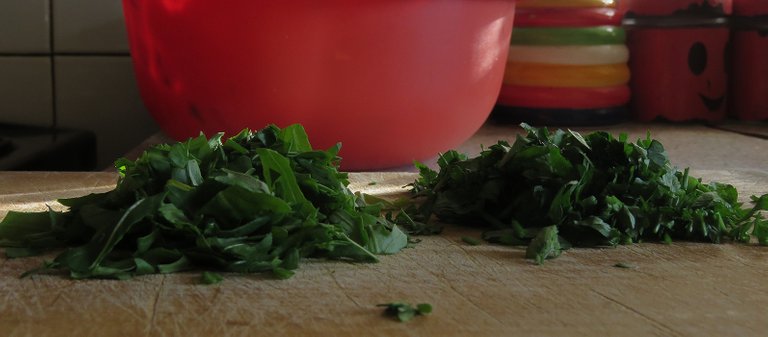
... and entire shoots of parsley.
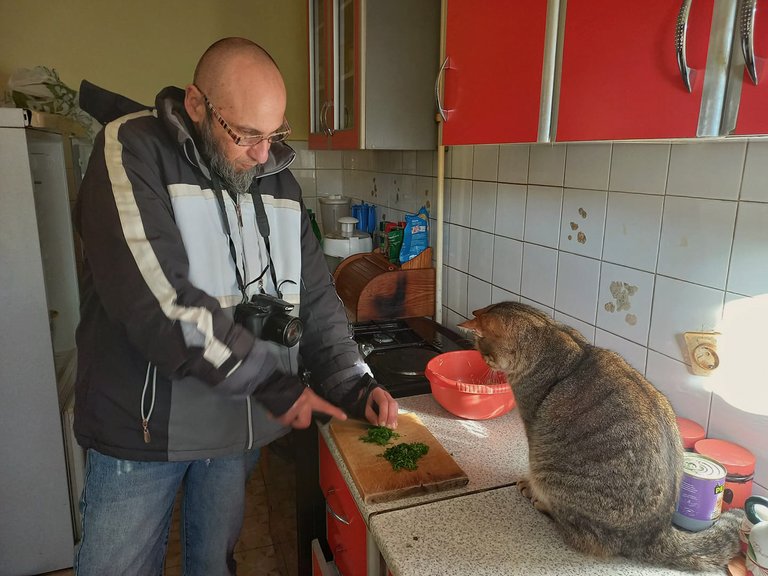
At one point Palchich sat down and started watching the proceedings like a serious feline apprentice.
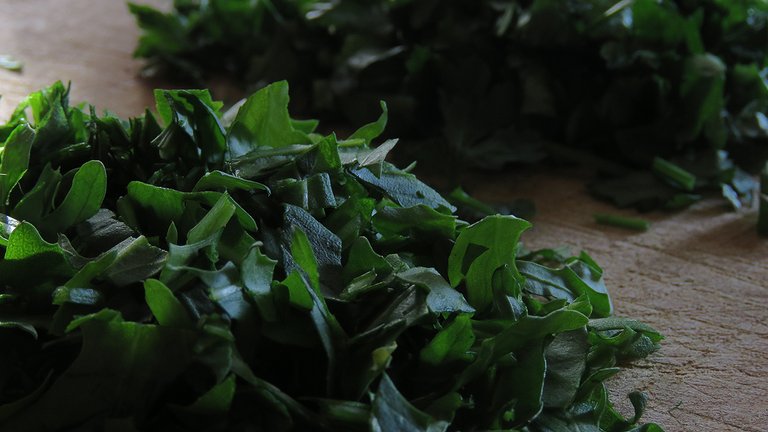
These two plants will enhance the aroma, but this isn't their primary role because the crab aroma is already good enough for my taste, they are here to make the thing less ugly to look at.

The crab meat looked much better now.

A bit of fresh greenery can do miracles.
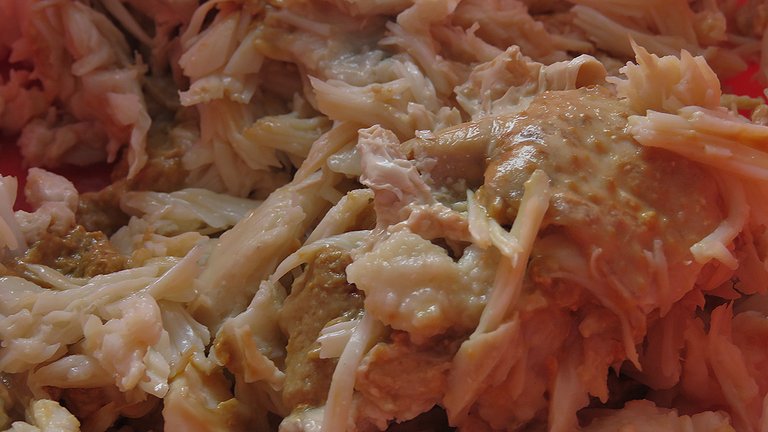
Here you can take another look at the crab meat before arugula and parsley were added. It does look slightly better in natural light than when photographed with the flash but is still pretty ugly.
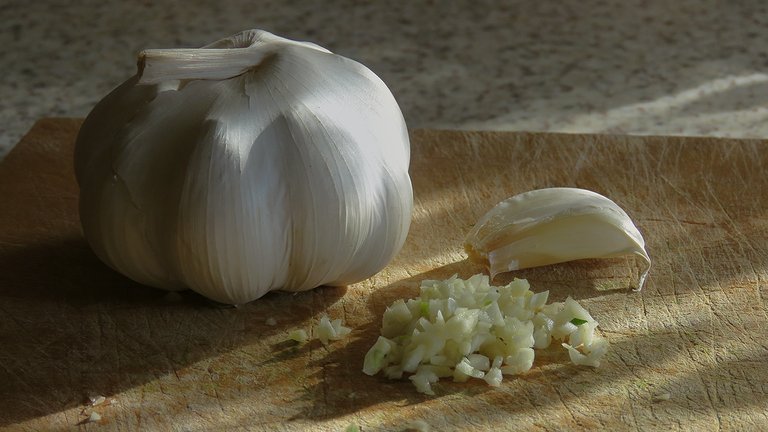
After those green plants, I prepared a bit of garlic ...
... while the cat called Bembo was resting nearby.
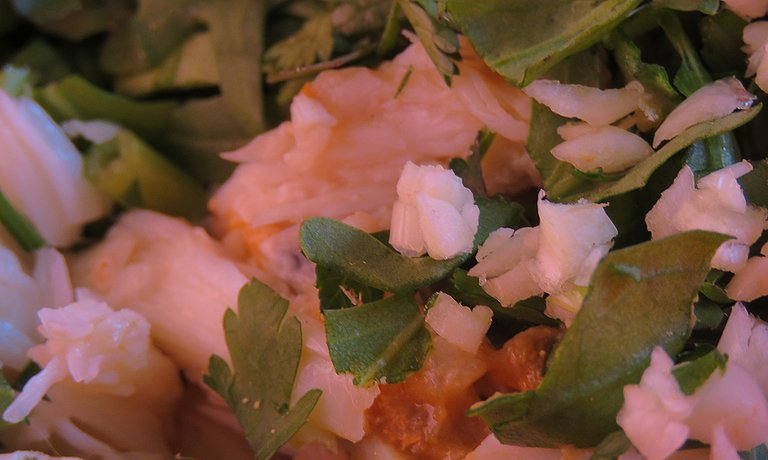
When the garlic was cut into small pieces, it was added to the mix, of course.
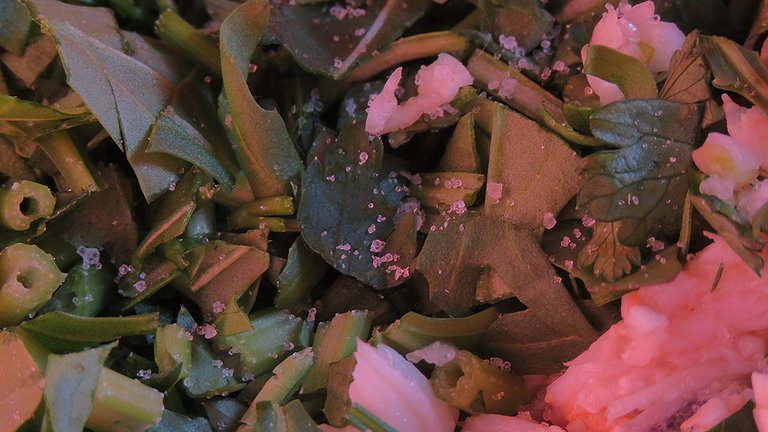
Then, I put a bit of salt.
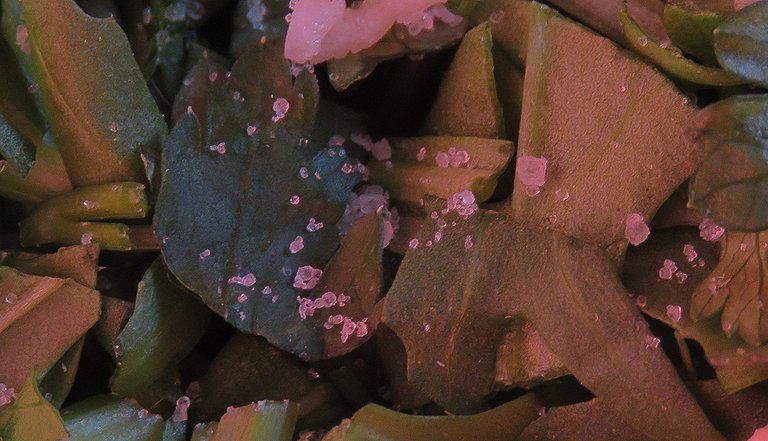
The minuscule crystals looked like the frost that could be seen from the kitchen window.
After that, under Bembo's expert supervision, I added a generous dose of olive oil. Most of the people I know add also a bit of lemon or vinegar to make a typical salad out of this thing, but I don't like it that way. Without any acid, the salty-sweet taste of the crab meat is more prominent, which is the most important thing for me.
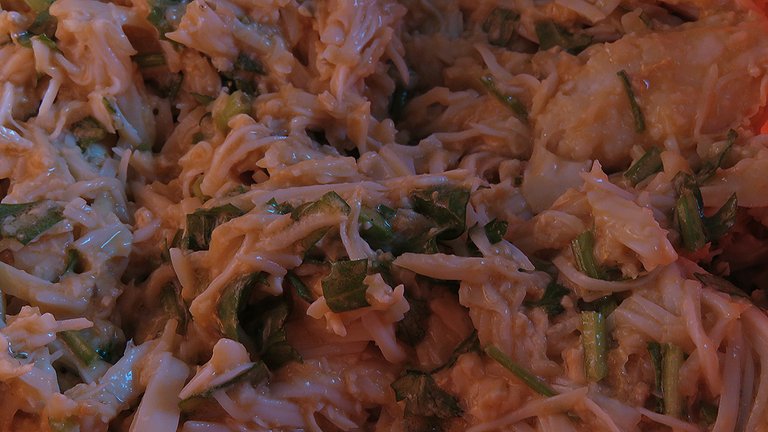
With all ingredients in place ...
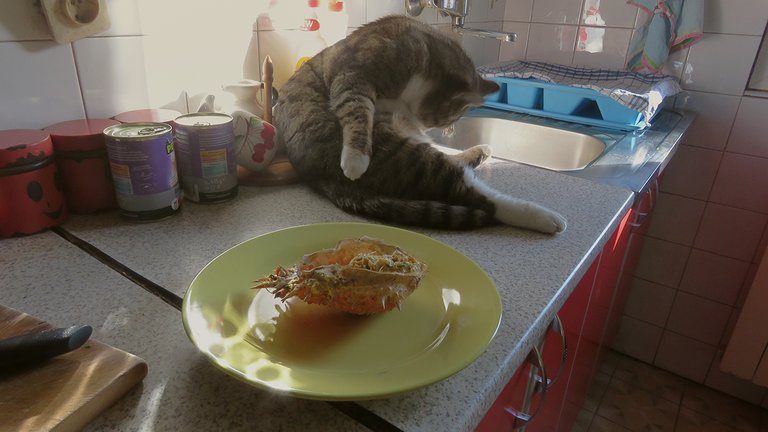
... it was time to put a bit of that salad back inside the crab ...
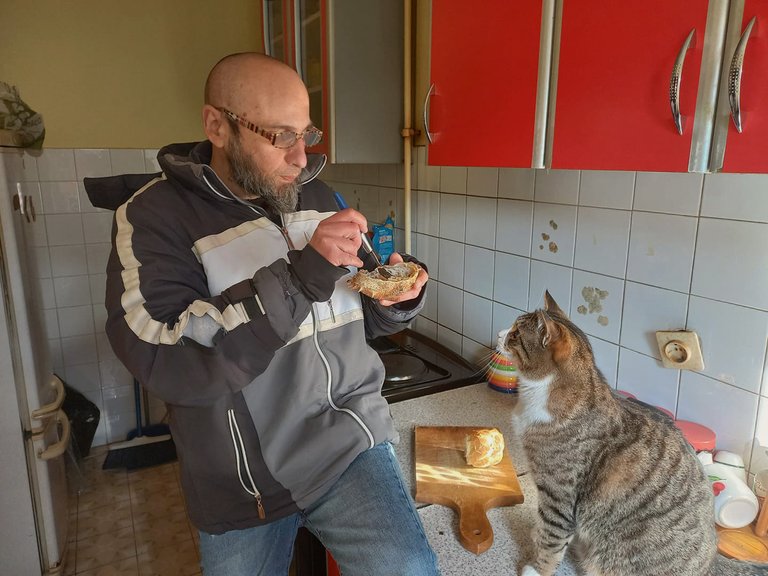
... and finally, try it.
Mmmmm ... delicious! 😃😻😻😀
And that's it - Bon Appétit!
THE PHOTOGRAPHS, EXCEPT THOSE FEW WITH ME IN THE PICTURE THAT WERE TAKEN BY A FRIEND OF MINE, ARE MY WORK - THE END.




